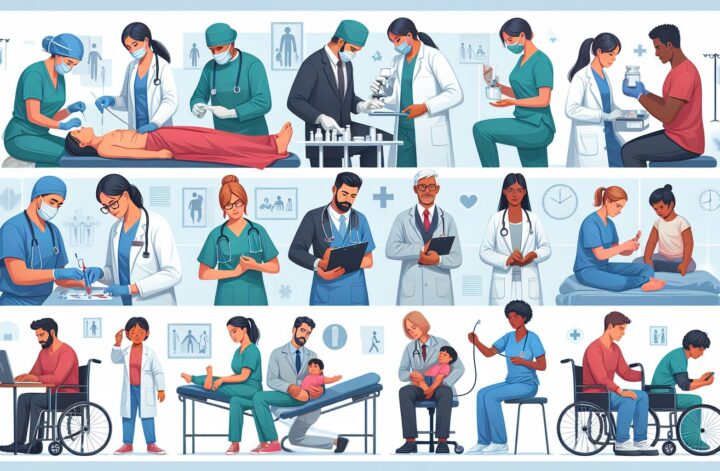Medical help is essential for maintaining good health and seeking treatment for various ailments. There are many different types of medical help available, ranging from primary care to specialized treatments. Understanding these different types can be crucial for making informed decisions about one’s health. In this article, we will explore the various types of medical help and the scenarios in which they are most beneficial.
Primary Care
Primary care is the foundation of medical help. It involves regular check-ups, preventive care, and addressing common illnesses and injuries. A primary care provider (PCP) typically includes general practitioners, family medicine doctors, and internists. They serve as the first point of contact for individuals seeking medical assistance. Primary care providers build a long-term relationship with patients and effectively manage their overall health and well-being.
Specialists
Specialized medical help is often required when a specific health issue demands expert attention. Specialists have advanced training and knowledge in a specific field of medicine. Some commonly known specialists include cardiologists, dermatologists, neurologists, and orthopedists. While primary care providers offer comprehensive care, specialists are essential for diagnosing and treating complex conditions that require expertise in a particular area.
Urgent Care
Urgent care is accessible outside of regular office hours, providing medical help for non-life-threatening situations that cannot wait for a scheduled appointment with a primary care provider. Urgent care clinics can handle minor injuries, illnesses, and perform diagnostic tests like X-rays and lab work. This option is convenient when immediate but non-emergency medical help is needed, such as treating a minor fracture or a sudden fever.
Emergency Care
In critical or life-threatening situations, emergency medical help is crucial. Emergency care is available 24/7 and treats severe injuries, sudden medical conditions, or accidents. Examples of emergency conditions include heart attacks, severe bleeding, deep wounds, difficulty breathing, and loss of consciousness. Emergency rooms in hospitals have specialized staff, advanced equipment, and resources to provide immediate care and stabilization before further treatment.
Telemedicine
In recent years, telemedicine has emerged as a convenient form of medical help. Telemedicine involves seeking medical advice and treatment remotely, usually through video calls or phone consultations. This option is particularly useful for minor ailments, follow-up visits, mental health support, and general medical advice. Telemedicine allows patients to access medical help without the need for in-person visits, saving time and expanding access to healthcare, especially in remote areas.
Conclusion
Having a clear understanding of the different types of medical help available is essential to navigate the healthcare system effectively. Primary care is the foundation of well-being, while specialists provide focused expertise within specific medical fields. Urgent care clinics offer timely assistance for non-life-threatening conditions, and emergency care is vital for critical situations. Telemedicine has rapidly gained popularity as a convenient way to seek medical advice remotely. By recognizing the types of medical help available, individuals can make informed decisions when it comes to their health, ensuring timely and appropriate care.




